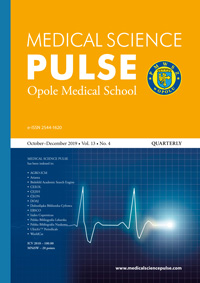Death due to rare rhinocerebral mucormycosis infection: a case report
Death due to rare rhinocerebral mucormycosis infection: a case report
Author(s): Tejaswini Baral, Vinodkumar Mugada, Raj Kiran KolakotaSubject(s): Health and medicine and law
Published by: Państwowa Medyczna Wyższa Szkoła Zawodowa w Opolu
Keywords: Mucormycosis; Diabetes mellitus; Orbital cellulitis; amphotericin B
Summary/Abstract: Background: Rhinocerebral mucormycosis is the most common form of mucormycosis in patients with diabetes mellitus; it is linked to poor prognosis, presenting most commonly in an acute setting, mimicking symptoms of sinusitis or periorbital cellulitis. The general survival rate in chronic cases is 83%, compared to 10–35% in acute. Aim of the study: To report a death due to rhinocerebral mucormycosis in a 45-year-old male patient. Case report: In this case report a 45-year-old male presented with acute rhinocerebral mucormycosis and was admitted in a state of unconsciousness with complaints of sudden onset weakness of right upper and lower limb, motor aphasia, right facial swelling, orbital swelling, and diminished distant vision. Upon primary diagnosis of stroke, treatment started immediately. However, past medical history from patient’s attendants revealed that the patient underwent a tooth extraction procedure 20 days prior, and had since developed redness of the right eye, diminished distant vision, and swelling of the right side of the face. Pus was drained, and reports revealed orbital cellulitis with an intracranial spread. By the time of admission to hospital, the patient had abnormal lab profiles (WBC, ESR, serum creatinine), acute kidney injury, with MRI revealing rhinocerebral mucormycosis. The patient developed septic shock and died during treatment. Conclusions: Acute mucormycosis carries a high mortality rate. Pleiotropic manifestations and organ dysfunction add to the further risk of mortality. Timely diagnosis and management may increase the chances of the survival rate of the patient.
Journal: Medical Science Pulse
- Issue Year: 13/2019
- Issue No: 4
- Page Range: 40-43
- Page Count: 4
- Language: English

